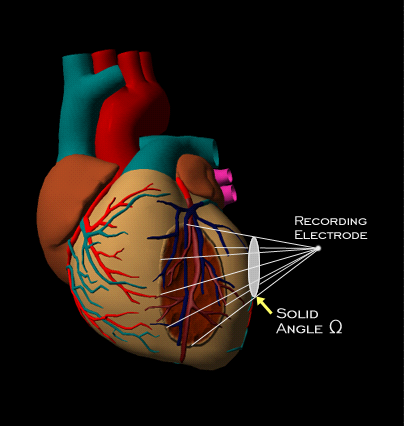
The magnitude of ST segment changes recorded on the body surface, whether elevated or depressed, is determined by two factors:
- The magnitude of the injury currents. This reflects the severity of the ischemic event.
- The solid angle created between the recording electrode and the boundary separating the normal and ischemic zones.
This reflects the size of the ischemic region.
Thus, for any given injury current, the larger the ischemic zone, the greater the ST segment change, and for any given ischemic zone, the larger the injury current, the greater the ST segment change
